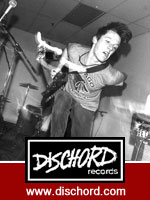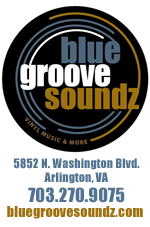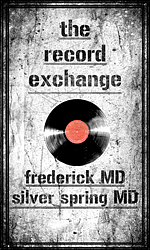
Proof of truly enduring music comes in work whose popularity can be celebrated in terms of decades. Accordingly, the 20th anniversary of the Son Volt debut Trace comes with a tour by Jay Farrar that began October 28 at the Birchmere in Alexandria, VA. The tour, in turn, heralds the same week release of a double disc reissue of the work that marked Farrar’s first creative departure from Uncle Tupelo in 1995.
It helps that the sound, songcraft, and familiar mournful vocals of Farrar was so well crystallized in Trace, and that its songs have been a highlight of his shows ever since, both in subsequent solo tours and in the band that went through a five-year hiatus and wholesale member change.
With his black bangs, rumpled western shirt and sideburns, Farrar at 48 looked pretty much as he did 20 years ago as well — or maybe like a character in this season’s Fargo. Surrounded by two Son Volt members from different lineups—the talented multi instrumentalist Gary Hunt on guitar, fiddle, and mandolin, and Eric Heywood on pedal steel, the old songs had a resonance and the easy familiarity of old boots.
And while the show was programmed to start by playing each one of the 11 songs on Trace, at least he shuffled their order so as to provide some surprise. It also meant he began with “Tear Stained Eye” instead of “Windfall,” the first tune of the album that became the last of the set of songs from Trace.
There was a nice logic to the songs as they unfolded, though; their detailed pictures of empty landscapes and lonely highways, combined with moaning regrets. They often had the biting sting of a relationship’s decline, captured in things like “Drown,” a song whose declarations in ’95 had indeed come true: “You’re with me now, will be again.”
While remaining more or less silent throughout the show, the latter half demonstrated how much his reconstituted Son Volt on its last album, Honky Tonk harkened back to the sounds of Trace with songs like “Seawall,” “Hearts and Minds,” and ”Bakersfield.”
Old things emerged, welcome, like “Back in Your World” from Straightways, “Methamphetamine” from The Search, “Driving the View” from Wide Swing Tremelo, and “Afterglow 61” from Okemah and the Melody of Riot.
He wasn’t limited by the instrumentation; that “The Picture” was missing horns and drums meant it showed itself to be more of a piece with the rest of the band’s output. They did present “Ten Second News” from Trace with double pedal steel guitars from Hunt and Heywood, a kind of guitar symphony in its way.
And though there were no drums all night, Farrar created a foot-pedal effect that approximated a bass drum beat on the first song of the encore, “Hearts and Minds” that was effective in a kind of one-man-band busking way.
Still, if there was not going to be a wide degree of variation in the musical presentation, there could at least have been that in the songs—an odd choice, a change of pace, a smile or a surprise. Instead, he stayed into his steady groove, which to some may have long since become a rut.
The attempt of change of pace may have been in the big cover to close the encore, Bob Dylan’s “Rainy Day Women #12 & 35,” which perhaps addresses the kind of criticisms and brickbats he’s had to endure all these years for just being mournful Jay Farrar (“They’ll stone ya when you’re trying to be so good”). Perhaps to show defiance, he played it in a style that brought the marching band beat of the Dylan anthem into his perfected Son Volt malaise.
In an attempt to match demeanors on the road—or to show the headliner to be a cheery guy by comparison—was the intriguing opening act Holy Sons, a Portland, OR, guy named Emil Amos whose outlook is so bleak he started with “Suicide is Painless,” the old MASH theme song done in more a suicidal crawl.
Amid his own songs, he chose some other interesting covers too, from Neil Young’s “On the Beach” to Big Star, over whom he mused at length about their fate. It made for a fascinating little set in which he lost himself. And the fact that he was talking to the audience, unlike the headliner, made him instantly seem more personable or at least more willing to communicate.
















